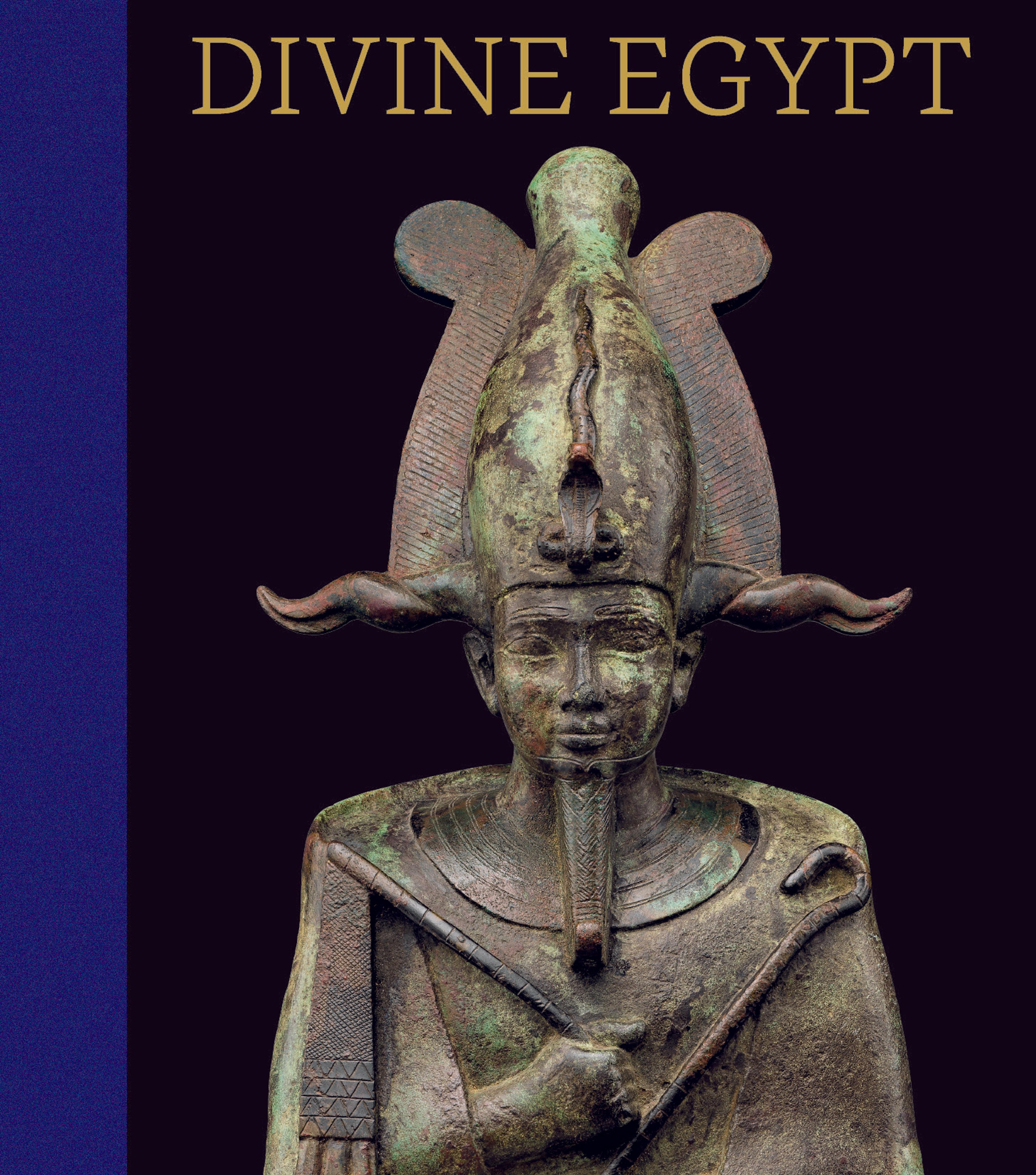Figurine of a cat with kittens
Through their appearance, the figures all allude to the goddess Bastet. In particular, many details evoke the myth termed "The Return of the Faraway Goddess." The feline / leonine Bastet was angry with the god Re and left Egypt for Nubia. Re wanted her back again, so he sent the god Thoth, who, taking the form of a monkey, lured her back with fables. Bes, musicians and dancers accompanied the train of the returning goddess, whose arrival brought the return of good fortune to Egypt. Figures of Bes (2015.11; 04.2.103), the cats (04.2.119, 04.2.120, 21.6.61), the monkeys (44.4.17), the nude females with ‘Nubian’ hairstyles (66.99.71), and the musicians (89.2.217, 17. 194.2441, 17.194.2459, 41.6.7) all relate to this tale; the figure with a conical ‘foreign’ cap carrying a vessel of beer (86.1.55) and the bound oryx behind the feathers of the Bes-image (2015.11) both allude to controlling the goddess’s dangerous nature.
Bes-rattles must have been used in a ritual performances, and Bes’s known role as a protector of women and childbirth suggests the rituals addressed such concerns. Bastet, too, had a role as the nurse of a divine child king, and the allusions to her stories may have invoked her power for similar ends.
Artwork Details
- Title:Figurine of a cat with kittens
- Period:Third Intermediate Period
- Date:ca. 1070–664 BCE
- Geography:From Egypt
- Medium:Faience
- Dimensions:H. 6.6 × W. 1.5 × D. 3.8 cm (2 5/8 × 9/16 × 1 1/2 in.)
- Credit Line:Rogers Fund, 1945
- Object Number:45.2.2
- Curatorial Department: Egyptian Art
Audio
616. The Faraway Goddess
Hear the myth of the faraway goddess.
NARRATOR: These objects all relate to the myth of “The Faraway Goddess.” The story typically centers on one of several goddesses, identified as the daughter of the sun god and referred to as “The Eye of Re.” The tale begins with the “Eye” running away from her father. Research associate Brendan Hainline:
BRENDAN HAINLINE: It becomes angry with him, and it goes south into Nubia, into the modern Sudan. So Re then sends someone—it varies in tellings who he sends—to go retrieve his eye, who has now taken the form of a lion or a cat and is living in Nubia, and to bring her back to Egypt.
NARRATOR: In one version of the tale, Re sends a “dog-monkey” to retrieve the eye.
HAINLINE: In that story, as the dog-monkey is convincing the Eye of Re to come back to Egypt, he tells a lot of fables.
There’s a fable about a cat and her kittens. There’s a fable about monkeys playing instruments. The dog-monkey himself also plays some instruments for the Eye of Re at certain parts of the story.
And the figures in these fables are some of the things you see represented here.
NARRATOR: For example, you can see a spotted cat with her kittens. There’s a figurine of a Nubian woman holding two small monkeys. And one showing a monkey sitting on a man’s shoulders, both playing musical instruments.
HAINLINE: I could see how ancient Egyptians of various levels of society could relate to this story that is essentially about a child being angry with their father and leaving and then needing to be brought back. It has very human elements to it.
More Artwork
Research Resources
The Met provides unparalleled resources for research and welcomes an international community of students and scholars. The Met's Open Access API is where creators and researchers can connect to the The Met collection. Open Access data and public domain images are available for unrestricted commercial and noncommercial use without permission or fee.
To request images under copyright and other restrictions, please use this Image Request form.
Feedback
We continue to research and examine historical and cultural context for objects in The Met collection. If you have comments or questions about this object record, please contact us using the form below. The Museum looks forward to receiving your comments.
